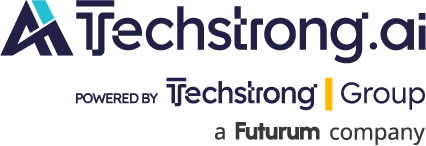
The notion that private cloud infrastructure is just for running legacy workloads is fast becoming outdated and redundant. The fact is, over 80% of modern, cloud-native workloads are running on private clouds, according to ReveCom analysis, benchmark data and market research firm Illuminas.
Enterprises that use public cloud automation based on Infrastructure as Code (IaC) can easily extend this to their private clouds, especially when virtualization has reached near-bare-metal performance. Virtual machines offer the same level of automation as the public cloud without losing much – and in some cases – any performance.
This is even more compelling given the infrastructure demands of AI workloads. The data shows that virtualization can provide GPU reservations and performance with the virtualization layer that are on par with or even superior to that of bare-metal alone.
The Performance Gap is Closing Fast
AI workloads increasingly require that enterprises run their data and model infrastructure on-premises. Comprehensive benchmarks reveal virtualized GPU performance approaching 95-100% of bare-metal performance in various AI domains. These tests indicate such setups can deliver the right balance between virtualization benefits and performance.
Recently published MLPerf Inference v5.0 results from different domains like vision, medical imaging and natural language processing showed virtualized environments approaching or exceeding the performance of bare-metal systems. Training workloads showed even closer performance parity: virtualized systems performed within 1.06% – 1.08% of comparable bare-metal counterparts.
Newer hardware acceleration technologies, such as Data Processing Units (DPUs), enable performance improvements by offloading network, storage and security workloads from CPUs. They provide dedicated hardware for packet processing, storage I/O acceleration and security functions. Such advances help reduce CPU overhead and improve overall system efficiency in virtualized environments.
Resource Efficiency and Cost Benefits
The efficiency advantage of virtualized infrastructure goes beyond performance parity alone. It also delivers superior resource efficiency/optimization. Tests demonstrate that virtualized configurations use only 28.5% to 67% of CPU core capacity and 50% to 83% of physical memory while maintaining near bare-metal performance.
That enables enterprises to pool and share CPU, memory, network bandwidth, storage and I/O across multiple workloads running on the same physical hardware. The remaining capacity can be used for additional applications, increasing hardware utilization and reducing infrastructure requirements. That means organisations can mix and match AI workloads and traditional line-of-business applications, as well as development and test environments on a shared infrastructure without performance degradation.
These benefits translate into cost advantages that rewrite infrastructure economics. For example, running multiple workloads at the same performance level results in TCO improvements of three to five times over bare-metal deployments. This leads to significantly lower hardware investments, energy consumption and data center footprint.
Security and Isolation Advantages
Bare-metal infrastructure poses specific security risks because shared kernel architectures expose all applications to common vulnerabilities. A compromised bare-metal environment impacts all co-located workloads since the isolation mechanism works at the application level instead of the infrastructure level.
Virtual machines offer greater isolation and security via hypervisors, which prevent security breaches that affect all shared workloads. Because every virtual machine works within its own security boundary, a compromised application cannot access data and resources of other applications running on the same physical machine.
The resource limits imposed by the hypervisor prevent the noisy neighbor problems found in bare metal environments, where badly behaved applications use up too many resources, starving other applications. In multi-tenant environments, VM-based fault containment allows secure resource sharing while maintaining strict isolation boundaries. Such security advantages directly support compliance requirements in regulated industries where data protection and workload isolation are fundamental operational requirements.
Learning from the Hyperscalers
The major cloud providers use virtualization strategically to automate and scale cloud services. A common example is a managed Kubernetes service running on VMs that is used to train/fine-tune/deploy AI models. Amazon EKS, Azure AKS and Google Cloud’s GKE all run Kubernetes on virtual machines rather than bare metal. This architectural approach, based on the real-world experience of providers offering managed services, proves the scale and agility of virtualization.
Kubernetes services that expose AI accelerators, such as GPUs and TPUs, often use vGPU and multi-instance GPU technologies. For inference at scale, they run workloads like Ray from Anyscale. Such clusters are also used to train ML models from scratch and fine tune LLMs and multimodal AI models.
These architectural patterns may inspire enterprise IT leaders in developing their infrastructure strategies. The collective experience of hyperscale providers suggests that virtualization offers the best compromise between performance, security and operational efficiency for AI workloads.
Private Cloud as AI Innovation Hub
Over half of organizations prefer private environments for AI model training, tuning and inference, as shown in Broadcom’s Private Cloud Outlook 2025 Report. This reflects the practical benefits of private cloud for running AI development and deployment workflows.
Data sovereignty and control are critical considerations for AI development, mainly because organizations work with proprietary datasets and build competitive AI capabilities. Private cloud infrastructure keeps sensitive training data/AI models within the organization while providing scalability for large-scale AI projects.
The elastic advantages of private clouds allow organizations to scale AI training jobs up or down without the cost unpredictability of public cloud GPU instances. This is particularly useful for large language model training and generative AI workflows, which require high computational demands for short periods. The AI development lifecycle, from model training to deployment for production inference, is well-suited to private cloud capabilities.
Private cloud infrastructure evolved from a legacy application platform to become the strategic foundation for next-generation workloads. Combining performance comparable to bare-metal systems, greater operational benefits and improved security makes the private cloud an ideal environment for organizations working on modern application development and AI innovation.
All of this technological advancement enables enterprises to achieve top-class performance while maintaining the control, security and cost predictability required for enterprise operations – making virtualization on the private cloud the launchpad for digital transformation in the AI era.

